 Cancers, like all cells, work in communities tied together through signaling. Like microbe communities they send and receive all kinds of signals for group behavior and for defense. They build their own unique organ with help from other cells. Recent research has shown that cancers enlist many other kinds of cells to work for them. Through conversations, they not only convince structural tissue cells such as fibroblasts to join them in their quest to build a new strong organ, but also blood vessel cells, and most surprisingly all kinds of immune cells. Please see the previous posts describing how cancer cells manipulate other cells to build their niche.
Cancers, like all cells, work in communities tied together through signaling. Like microbe communities they send and receive all kinds of signals for group behavior and for defense. They build their own unique organ with help from other cells. Recent research has shown that cancers enlist many other kinds of cells to work for them. Through conversations, they not only convince structural tissue cells such as fibroblasts to join them in their quest to build a new strong organ, but also blood vessel cells, and most surprisingly all kinds of immune cells. Please see the previous posts describing how cancer cells manipulate other cells to build their niche.
Metastatic cancers are the worst kind. They are the most deadly. Research is just now discovering the ways that cancers can create new niches in distant totally different types of environments. Several posts described the many ways that cancer cells use communication to move to these new areas, even sending sacks filled with genetic information to land in the new niche and help develop it. The then convince the local structural and tissue cells to join them as in the original colony. They receive help from platelets, white blood cells, and even microbes. Travel through blood vessels is one major route to start metastatic colonies, and also lymph drainage. Recent research shows that most metastatic colonies are not from direct travel. While it is not clear how many of these start, it is based on signals to distant tissues.
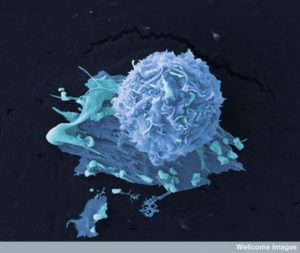 Now new research shows that cancers can actually stimulate their own new lymph vessels in distant sites adjacent to lymph nodes and in organs, and have satellite areas ready for their arrival. These new lymph vessels are totally independent from the new local blood vessels and lymph nodes stimulated by cancers.
Now new research shows that cancers can actually stimulate their own new lymph vessels in distant sites adjacent to lymph nodes and in organs, and have satellite areas ready for their arrival. These new lymph vessels are totally independent from the new local blood vessels and lymph nodes stimulated by cancers.
Cancer cells can travel through lymph vessels from the main first colony. They travel through the lymph to far off regions. These vessels can be the start of new lymph nodes specially helping the cancer. For this reason, one cancer treatment is to cut out lymph nodes that are near. But, now the story has become more complex with long range communication and signaling from the cancer to distant nodes. These new distant nodes are especially friendly to the cancer having been stimulating through signals from the cancer. Also, a very recent study showed that most metastatic disease does not start by simple travel from the original site.
Cancers Stimulating Creation of a Distant Vessel
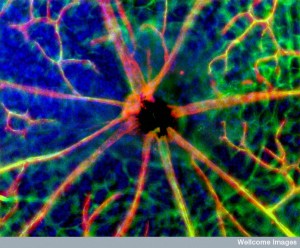 A recent study shows that a melanoma can stimulate the creation of distant lymph vessels that are prepared for the eventual arrival of cancer cells to start a metastatic colony. This study showed that the lymph vessels that cancers first stimulate operate locally and are unrelated to the distant separate lymph vessels. They are producing both in different ways. The primary tumor is however responsible to keep alive the distant niches that are called pre metastatic sites. In fact, if the primary tumor is taken out, a few cells are enough to stimulate these pre metastatic sites and cause a relapse.
A recent study shows that a melanoma can stimulate the creation of distant lymph vessels that are prepared for the eventual arrival of cancer cells to start a metastatic colony. This study showed that the lymph vessels that cancers first stimulate operate locally and are unrelated to the distant separate lymph vessels. They are producing both in different ways. The primary tumor is however responsible to keep alive the distant niches that are called pre metastatic sites. In fact, if the primary tumor is taken out, a few cells are enough to stimulate these pre metastatic sites and cause a relapse.
The primary tumor sends a special tumor signal (MDK) both in the blood and in sacks filled with information. This signal stimulates the creation of new lymph vessels at distant sites. These help lay the groundwork for future niches and sites. In fact, too much of this signal can alter the type of cancer itself from one that doesn’t usually metastasize into one that does. It operates by interacting with mTOR system that regulates production of proteins and also the availability of necessary materials. (Please see the post on mTOR for the story of this very interesting molecule that seems to signal as if it is an organelle). So the signals can produce the lymph vessels and also push the tumor in the direction of metastasizing. In fact, the research showed that when these signals are high, the illness is much worse. Targeting these new signal pathways might be part of important future treatments.
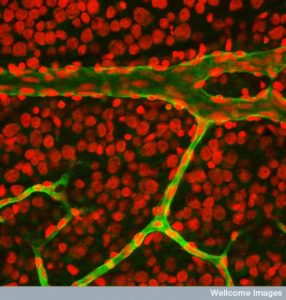 This is new research and therefore it is not clear how much the signals travel through the blood and interact with the blood vessel capillary cells. These cells were shown in a previous post to be vital for each organ, being in close contact with the stem cells of each organ. Or it might only work through vesicles where it stimulates new lymph vessels. Just as each capillary cells is different in each organ (another new finding), it is possible that each lymph vessel is also unique to the organ.
This is new research and therefore it is not clear how much the signals travel through the blood and interact with the blood vessel capillary cells. These cells were shown in a previous post to be vital for each organ, being in close contact with the stem cells of each organ. Or it might only work through vesicles where it stimulates new lymph vessels. Just as each capillary cells is different in each organ (another new finding), it is possible that each lymph vessel is also unique to the organ.
Previous Findings on Metastasis
This new research shows that with widespread communication among cells, the spread of cancers are much more complex than previously thought.
This is a summary of information about metastasis from the previous post:
- Survival of colonies depends on the ability to maintain the cells in a new environment,
 Needs unique communication with the supportive cells of the new tissue
Needs unique communication with the supportive cells of the new tissue- Needs to create an active helpful matrix between the cells
- The successful metastatic colony has already advanced through all of the primary stages of the cancer and then the production of the new niche.
- It often starts as a subset of the original tumor.
- It occurs in many ways including teaching distant cells to become cancerous through education of the stem cell niche.
- It must develop the capacity to travel from the original colony
- Cells change from epithelial to mesenchymal (EMT) where mesenchymal are more aggressive and mobile like original migrating cells in the fetus
- New mesenchymal behavior includes ability to alter the environment by changing the matrix material in tissues between cells.
- The process is different in each tissue involving different signals among the local cells and blood vessel cells.
- Cancers start with special stem cells called cancer stem cells (CSCs) and these have the capacity to start a tumor.
- All have at least a small number of these CSCs that some feel are what makes the cancer grow and recur.
- Initiating CSCs are necessary to start the metastatic colony as well.
- CSCs also resist treatments more.
- Travel occurs by two different mechanisms.
 One is movement of single cells and the other is groups of cells that travel together.
One is movement of single cells and the other is groups of cells that travel together.- The EMT changes in single cells and individual members of groups.
- These cells become leaders of the movement and carry the others along.
- Many cancer cells in the groups have properties of both epithelial and mesenchymal cells.
- Signals from the local tissue cells called stroma (structural) stimulate the EMT changes.
- Local cells enlisted as helpers of cancer
- communication vital to development, survival and spread.
- Signals from immune cells that are recruited to help.
- Cancers are “wounds that don’t heal” by enlisting the ongoing effects of inflammation activity help cancer’s change.
- These include structural connective tissue fibroblasts, muscle cells, white blood cells, lymph cells, and epithelial border cells for tissue and blood vessels. They behave as if they are part of a healing wound with intensive signaling.
 Group dissemination involves many cells working together.
Group dissemination involves many cells working together.- When cancers invade nearby tissues usually it is a migration of many cells together into the next organ.
- cells are in close communication and work together
- EMT cells don’t have tight junctions anymore with less boundaries
- Collective movements occur at the edge of invasive cancers (breast and lungs).
- EMT cells also move together into new areas. with a variety of different cells with different purposes.
- certain cells with EMT characteristics become the leading invasive edge.
- The followers have less EMT changes.
- The leading cells produce enzymes that eat up the extracellular matrix between cells to make room for all of the cells behind.
- The leading cells have the EMT aggressiveness and mobility.
- Leaders may even be different types of cells, such as fibroblasts, that undergo EMT.
 Traveling cells can be individual or groups.
Traveling cells can be individual or groups.- Groups can stay together hooked one to one and even pass through capillaries one cell at time.
- clusters are better at starting metastatic colonies.
- When cells are single, they are often get stuck or commit suicide.
- Groups can fight off killer cells better, also
- Platelets help the cancer produce a metastatic site
- Platelets can coat the cancer cell and protect it from immune cells
- Platelet signals help cancer cells to alter their EMT status better able to form metastatic sites. These Signals encourage the transformation even if the local background cells haven’t already started the process.
- Cancer cells signal back to platelets and encourage them to signal to the nearby lining cells, with which they have a longstanding relationship.
- They send signals that make the blood vessels leakier.
- They also help with the cluster’s ability to attach to the blood vessel cells to start their colony.
 Neutrophils produce traps designed to catch microbes, help cancer cells survive by protecting them.
Neutrophils produce traps designed to catch microbes, help cancer cells survive by protecting them.- The traps help cancers attach to lining cells, and then help an exit from the blood vessel into tissue.
- Neutrophils also provide enzymes that make cancer’s travel easier into extra cellular matrix.
- Conversations with cancer cells and neutrophils can, also, suppress immune attacks from T cells (CD8+) and natural killer cells.
 To cross the blood vessel lining cells and enter tissue to make a new home, cancer cells use many different signals and conversations.
To cross the blood vessel lining cells and enter tissue to make a new home, cancer cells use many different signals and conversations.- Platelets are stimulated to signal to the lining cells to loosen the junctions allowing cancer cells to travel in between the lining into tissue.
- This occurs by stimulating lining cells to contract and pull away from other cells.
- These factors were helpful when the cancer cells first left their community by pushing them out of tissue into blood vessels and here they do the opposite allowing them back into the tissues.
- Each tissue presents unique environments and different types of conversations and signals. Most studies are in the lungs.
- Some tumors just grow in the blood vessel attached to the lining cells and when large enough the blood vessel breaks open.
 Even dormant, cells can create a special living environment (called the dormant niche) where they can live happily for a long time.
Even dormant, cells can create a special living environment (called the dormant niche) where they can live happily for a long time.- These cells can be resistant to treatment.
- Special niche environments are usually used by tissue stem cells and they are taken over by this cancer cell.
- These are often near blood vessels since capillaries have a special relationship with stem cells in each tissue.
- With active conversations occurring between capillary cells and the stem cell niche, blood vessel signals can maintain the dormant cancer colony or single cell.
- These dormant cells in the niche send signals that inhibit natural killer cells and other immune cells.
- These immune cells participate in stimulating the cancer cells to become dormant. However, T cells continue to fight against the cancer cells.
 To succeed, the cancer cell must start a tumor and thrive with the new local environment signals.
To succeed, the cancer cell must start a tumor and thrive with the new local environment signals.- The particular cancer cells are better dealing with some tissues than others, but still have to change and adapt to communicate with local cells.
- Success is not determined just by traveling in the direction of the local blood vessels.
- Specific pathways to adapt are found for bone, lung, liver, and brain. In brain, astrocytes make plasmin that kills cancers.
- A different process can occur, where cells living normally in a tissue can become a metastatic colony for a distant primary cancer of a different type of tissue.
- Active mobile mesenchymal cells and their dynamic extra cellular matrix can be involved.
- These changes occur in a similar way to the primary cancer with support and changes from the local cells.
- This is similar to sleeping cancer cells awakening stimulated by local conversations.
- Cancer cells contribute to active supportive matrix, but also stimulate other cells to do the same.
- Fibroblasts cause fibrosis which contributes to the cancer niche.
- The amount of stiffness in the matrix is determined by more cross links in the collagen structure and creates better metastatic environment.
- This also induces a low oxygen situation that helps the cancer as well.
Cancers Produce Their Own New Lymph Vessels to Travel
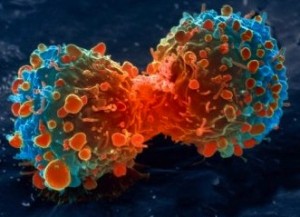 Communication among cancer cells with each other, with immune cells and supportive cells are the way cancers grow and prosper. Previous research found that cancers could stimulate local blood vessels and lymph vessels. Recently, it was found that most cancer cells don’t create metastasis by direct travel. It is not clear how many occur. But, cancers send messages to distant tissues and create pre metastatic niches.
Communication among cancer cells with each other, with immune cells and supportive cells are the way cancers grow and prosper. Previous research found that cancers could stimulate local blood vessels and lymph vessels. Recently, it was found that most cancer cells don’t create metastasis by direct travel. It is not clear how many occur. But, cancers send messages to distant tissues and create pre metastatic niches.
Now, a totally new process shows they can produce distant lymph vessels and nodes that help create the metastatic niche. As with all other activities of cells this occurs
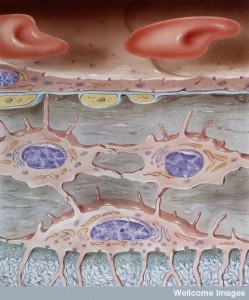 Needs unique communication with the supportive cells of the new tissue
Needs unique communication with the supportive cells of the new tissue One is movement of single cells and the other is groups of cells that travel together.
One is movement of single cells and the other is groups of cells that travel together.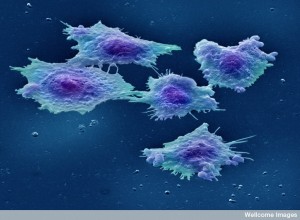 Group dissemination involves many cells working together.
Group dissemination involves many cells working together. Traveling cells can be individual or groups.
Traveling cells can be individual or groups.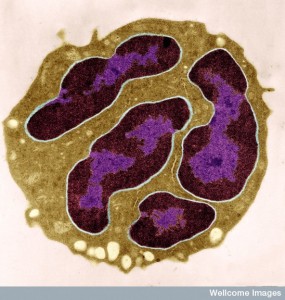 Neutrophils produce traps designed to catch microbes, help cancer cells survive by protecting them.
Neutrophils produce traps designed to catch microbes, help cancer cells survive by protecting them.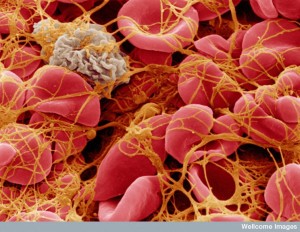 To cross the blood vessel lining cells and enter tissue to make a new home, cancer cells use many different signals and conversations.
To cross the blood vessel lining cells and enter tissue to make a new home, cancer cells use many different signals and conversations.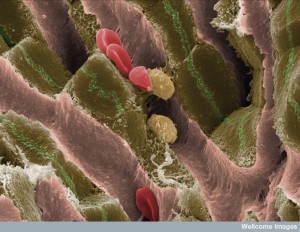 Even dormant, cells can create a special living environment (called the dormant niche) where they can live happily for a long time.
Even dormant, cells can create a special living environment (called the dormant niche) where they can live happily for a long time. To succeed, the cancer cell must start a tumor and thrive with the new local environment signals.
To succeed, the cancer cell must start a tumor and thrive with the new local environment signals.